cryptocurrency bubble
description: speculative bubble of cryptocurrency assets
22 results

Number Go Up: Inside Crypto's Wild Rise and Staggering Fall
by
Zeke Faux
Published 11 Sep 2023
There still wasn’t much you could do with Bitcoins, and crypto remained largely the domain of geeks and hobbyists. But around that time, a man going by “dacoinminster” had posted a proposal on the popular message board Bitcointalk that would lead to the creation of Tether and make the entire $3 trillion cryptocurrency bubble possible. He called his idea “MasterCoin.” Dacoinminster’s real name was J. R. Willett, and he was a thirty-three-year-old software developer at a calendar-app company in a suburb of Seattle, Washington. When I reached him on the phone a decade after his momentous forum post, he was still working there, and he was happy to recall his moment of glory.
…
With this gambit, Bitfinex earned customers’ loyalty. And judging from what he’d do in the next few years, Devasini had learned a lesson: He could get away with bending the rules. * * * — BITFINEX WAS ABLE to earn the money back so quickly because crypto was in the middle of its first bubble, which lasted from 2017 to 2018. Hundreds of new cryptocurrencies were launched, spurring huge amounts of trading on Bitfinex and other exchanges, which in turn increased the demand for Tether. These new tokens were sold by start-ups to fund the development of apps, just like Willett did with MasterCoin. Their founders promised the coins would be useful once the apps were created.
…
See also specific exchanges Bankman-Fried on solvency of (2022), 168 banks and, 52, 56–57 first big, 48, 102 hacking of, 101–103 importance of, 135 money laundering and, 21, 61 questionnaire sent to thirteen largest, by New York attorney general’s office, 60 security of, 101, 102, 103 CryptoDickButts, 166 CryptoPunks, 143 Cuban, Mark, 124 CumRocket, 15 Curry, Steph, 142 D “dacoinminster,” 34–36 The Daily Show, 107 dark pools, 59 Dash, Damon, 156 Dauphinot, Clarence, Jr., 67 David, Larry, 90, 131 Davies, Kyle, 166, 167 Davis, Noah, 143 Davis, Philip, 77–78, 130 decentralized finance (DeFi) apps, 102, 113–115, 117, 118 Degenerate Trash Pandas, 132 Delitzia, 40 Deltec Bank & Trust (Bahamas) under Chalopin, 67 as sponsor of Crypto Bahamas conference, 136 Tether and, 66, 67 Dentacoin, 114 Devasini, Giancarlo appearance of, 210 background, 41, 42, 44 Betts and, 57 on Bitcoin, 47 Bitcoins seized by FBI and, 109 blog posts by, 44–46 Bukele and, 199, 201 business ventures prior to Tether, 39, 40, 41–43, 47 career as plastic surgeon, 11, 40–41 Chalopin and, 67 as de facto CEO of Tether, 137 Faux’s article blasted by, 68–69 first cryptocurrency bubble and, 51 Keiser and Herbert and, 205, 210, 239 loan to FTX refused by, 231 on Madoff, 45 money transfers from Crypto Capital, 61, 62 percent of Tether owned by, 38, 239 Tether’s business model and, 58 Tether’s line of credit to Bitfinex and, 63 on Twitter, 68 “digital art.”

On the Edge: The Art of Risking Everything
by
Nate Silver
Published 12 Aug 2024
Ethereum, 324, 326–27 as focal point, 329, 332 poker and, 109 profitability of, 310 See also cryptocurrency Black, Fischer, 479 blackjack, 131–37, 481 Black-Scholes formula, 479 black swans, 479 blinds (poker), 41, 480 blockchain technology, 322, 323–24, 325–26, 480 blockers, 229, 480 bluffing, 39–40, 51, 64–65, 70–75, 77, 101, 125, 509n board (poker), 41, 480 Boeree, Liv, 347 Bollea, Terry G., 274 bookmakers, 480 See also retail bookmakers Bored Apes, 480 Boredom Markets Hypothesis, 310, 480 Bostrom, Nick, 364, 372, 380, 417, 418, 442, 470, 491, 498 Box, George, 447n Bradley, Derek, 198 Brin, Sergey, 259, 406 Bringing Down the House, 131 Brokos, Andrew, 46, 486–87 Brownhill, Jean, 288–89 Brunson, Doyle on bluffing, 39–40, 51, 64 bracelet wins, 98 on computer applications, 39, 47 independence and, 239 poker history and, 40–41, 43, 506n raise-or-fold attitude and, 230 sports betting and, 194–95 Super/System, 39–40, 45–46 on tight-aggressive strategy, 39, 498 bubble, cryptocurrency, 306–7, 307, 310, 311–18, 317 bubble (poker), 480 Buchak, Lara, 364–66 Buffett, Warren, 344, 431n, 497 bullet (poker), 480 bust out, 480 Buterin, Vitalik, 250, 323–24, 326, 327, 329n button (poker), 480 buy-in, 480 C Calacanis, Jason, 252 calibration, 480 California Gold Rush, 139–40 call (poker), 480 calling stations (poker), 48, 480, 507n call options, 480 canon, 481 capitalism, 28–29, 32, 174, 403 Caplan, Bryan, 447n capped (poker), 481 Cappellazzo, Amy, 329–30 Carlsen, Magnus, 84 cash games, 83–84, 115, 251–52, 481 casinos, 5–8 abuse and, 118, 149 advantage play, 478 agency and, 453 analytics and, 153–54 Archipelago and, 22 blackjack, 131–37, 481 card counting, 131–37, 481 corporatization of, 138, 144, 145 COVID-19 and, 7–8, 10, 10 customer loyalty, 156–58, 515n design of, 162–63, 167–68 Downriver and, 21–22, 374, 483 gender and, 166n house edge, 132, 154–55, 155 hustle and, 134–35, 513n Las Vegas history, 139–45 payout structures, 154–56, 155, 156, 166 poker and, 22 private games at, 83 regulation of, 134, 135, 143–44, 157, 513n, 514n safety of, 128n sports betting in, 174–75, 177–78, 182–83, 185–87 Trump and, 142, 150–52, 514n trust and, 143–44, 514n Steve Wynn’s influence, 146–49, 148 See also gambling; slots catastrophic risk.
…
Somehow, between the anxiety caused by the unprecedented mass death of COVID and the boredom caused by the unprecedented lack of social interaction, Americans’ appetite for YOLO (You Only Live Once) behavior exploded, manifesting itself in everything from illegal fireworks displays to traffic accidents to cryptocurrency bubbles. (Bitcoin prices increased roughly tenfold in the year after the WHO declared COVID-19 to be a pandemic.) And so in April 2021—even as schools remained closed in parts of the country—American casinos won a staggering $4.6 billion in gaming revenues from their patrons, 26 percent higher than in the same month two years earlier, before the pandemic.
…
Bracelet (poker): The gold bracelet awarded for winning an event at the World Series of Poker; there are now more than one hundred bracelet events every year between live and online WSOP tournaments, but bracelets remain highly coveted. BTC: An abbreviation for the current market price of Bitcoin, the native cryptocurrency of the Bitcoin blockchain. Bubble (poker): The stage of a poker tournament just before cash prizes are awarded. It can compel significant departures in strategy, such as big stacks avoiding conflicts with one another while relentlessly attacking small stacks who are trying to survive just long enough to receive a minimum prize (mincash).
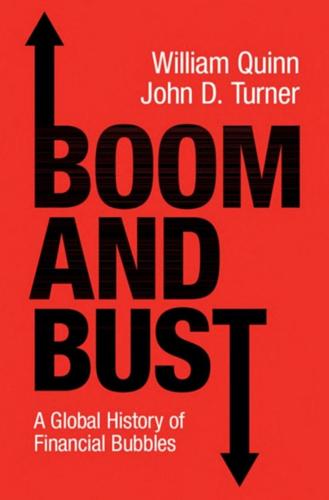
Boom and Bust: A Global History of Financial Bubbles
by
William Quinn
and
John D. Turner
Published 5 Aug 2020
After a temporary recovery, it collapsed again. On 17 December 2018, exactly one year after its peak, one bitcoin was valued at $3,332 – a fall of 83 per cent.5 Other cryptocurrencies fared even worse: Invictus Capital’s CRYPTO20 index, which tracked the value of the 20 largest cryptocurrencies, fell by over 93 per cent.6 The bubble triangle presents a framework that applies just as well to the 2017 cryptocurrency bubble as it does to any of the financial bubbles over the past 300 years. But how good will it be at predicting future bubbles? The three sides of the bubble triangle all need to be present for a bubble to happen. In terms of money and credit, bubbles are much more likely to happen when there are low yields on traditional assets, low interest rates and unconstrained credit provision.

Shocks, Crises, and False Alarms: How to Assess True Macroeconomic Risk
by
Philipp Carlsson-Szlezak
and
Paul Swartz
Published 8 Jul 2024
We also saw how the policy response to the global financial crisis spawned a bubble in long-term government bonds engineered by ultra-easy monetary policy including large-scale asset purchases (quantitative easing) that bid up bond prices (and lowered interest rates). And since supposedly risk-free government rates are a reference value for many other asset classes, the bubble in long-term government bond valuations spawned an “everything bubble.” By 2021, everything from equity valuations to soaring cryptocurrency and NFT prices signaled froth.4 We believe a bubbly backdrop is a feature, not a fluke, of the modern economy for several structural reasons. First, greater cycle longevity (a theme we covered in chapter 3) allows excesses to build. When recessions came along every few years, the runway for exuberance was limited.
…
The cycle’s tendency to longevity is aided by lower volatility of output and by stimulus looking to extend the cycle whenever possible. Second, the shift toward a more deregulated and financialized economy encourages bubbles. Financial innovations can even become the bubble (see cryptocurrencies) or they can help inflate them (see the complex mortgage securitization during the housing bubble). And even if the forces of deregulation weaken, ample room for financial innovation remains. Third, lower interest rates push investors and speculators to stretch for returns, while lowering opportunity costs and increasing the present value of distant profits.
…
As railway share prices increased, speculators moved in pushing prices to unsustainable levels, followed by a collapse. Regarding the tech bubble, see Michael Lewis, The New New Thing: A Silicon Valley Story (New York: W. W. Norton & Company, 2000). 4. Regarding cryptocurrencies, we realize that many will disagree, and perhaps not all pockets of crypto are a bubble. But we should be able to agree that dogecoin was evidence of froth. Regarding NFTs, digital assets are likely to be real, but the $2.9 million paid for the digital rights to the first-ever tweet from Jack Dorsey seems off. Regarding bankrupt stocks, Hertz, JCPenney, Pier 1, and Whiting Petroleum (among others) experienced temporary sharp rallies in 2020. 5.
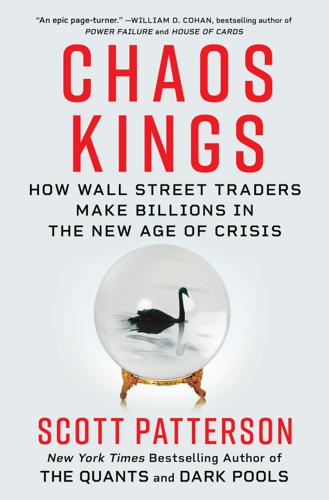
Chaos Kings: How Wall Street Traders Make Billions in the New Age of Crisis
by
Scott Patterson
Published 5 Jun 2023
Sornette, like nearly everyone else with even a passing interest in finance at the time, had also grown intrigued by bitcoin, the computer-generated cryptocurrency. Bitcoin is “one of the largest speculative bubbles in human history,” he and a fellow ETH professor said in a 2020 paper. A phenomenon they called the Social Bubble Hypothesis fueled its growth. Bubbles in this context are good for innovation, driving technology forward through social herding and scaling. As investors flooded into bitcoin—driving its overall value to $300 billion by 2018—the viability of it as a useful financial instrument increased. The bitcoin bubbles “were necessary to bootstrap and scale the protocol and cryptocurrency,” the professors wrote.
…
Elon Musk had been a master of bubbles, becoming a billionaire in the early 2000s just as the dot-com bubble was bursting. His coup? Selling PayPal—Musk was the largest shareholder with about 12 percent of the stock—to eBay for $1.5 billion. With Tesla, he was riding what Sornette called the Green Energy Bubble (Musk was one of its principal creators, Sornette believed). Musk was also dabbling in cryptocurrencies—another bubble, thought Sornette. Sornette’s monthly Global Bubble Status Report in February 2020 noted: “As the dragonhead of the Electrical Automobile companies, Tesla has persuaded many people that it is a new ‘APPLE’ of the coming decade and all other petrol-fuel mechanical car companies are just like ‘Nokia.’ ” Calling Musk a “clever CEO with many creative marketing strategies,” the report said Tesla is reminiscent of dot-com bubble stocks and “very dangerous for short-sellers.”
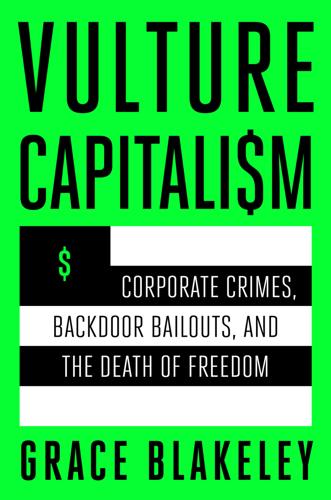
Vulture Capitalism: Corporate Crimes, Backdoor Bailouts, and the Death of Freedom
by
Grace Blakeley
Published 11 Mar 2024
And this role has become more important as the destructive power of finance has increased. Ever since financial markets first came into existence, it has been possible to observe “manias, panics and crashes” that nearly bring down the whole system.86 From the tulip bubble in the 1630s, to the subprime bubble before the 2008 financial crisis, to the recent cryptocurrency bubble, these tend to follow predictable patterns.87 A new trend emerges, investors pile into a new asset, betting that it will revolutionize the world economy. The price of the asset rises, before reaching a peak and then falling. Most previous bubbles have followed almost the same graphical pattern.
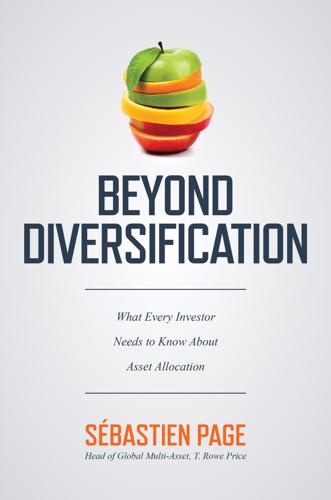
Beyond Diversification: What Every Investor Needs to Know About Asset Allocation
by
Sebastien Page
Published 4 Nov 2020
A decade later, as asset prices reached new highs across markets, in our Asset Allocation Committee we constantly asked ourselves, “Where’s the excess speculation, the latent risk?” In other words, where’s the bubble? The answer isn’t obvious. The postcrisis rally in risk assets has been largely supported by fundamentals. Investors have become more cautious. Some refer to this rally as an unloved bull market. There was a bubble in cryptocurrencies, but it’s been deflating somewhat slowly and, so far, without systemic consequences. However, we do worry about latent risks such as the unprecedented levels of government debt and 0% interest rates outside the United States. As the events related to the coronavirus pandemic of 2020 continue to unfold, pundits like to compare this crisis with the 2008 financial crisis.
…
Yet its impact is greater than anything we’ve discussed so far. Once revealed, it becomes obvious and intuitive. On December 31, 2017, I met with three old friends in Newport Beach, California, for a champagne brunch. We got into a debate on Bitcoin, which had closed above $14,000 the week before. Two of my friends were bullish on the cryptocurrency. I said it was a bubble, about to burst. (I don’t trade Bitcoin.) I converted our fourth compadre to my view. Two against two. To settle the disagreement, we decided to bet on Bitcoin’s direction in 2018. We would meet again for brunch in a year. If Bitcoin went below $5,000—a 64% drop—the other bear and I would win.
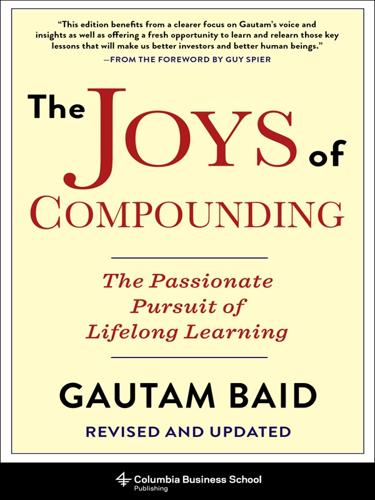
The Joys of Compounding: The Passionate Pursuit of Lifelong Learning, Revised and Updated
by
Gautam Baid
Published 1 Jun 2020
Prominent historical events include the Dutch tulip mania; the South Sea Bubble (during which a mythical company was chartered “for carrying on an undertaking of great advantage but no one to know what it is”); the Roaring Twenties (including the Florida land bubble), followed by the Great Crash of 1929; the “tronics boom” in the 1960s; and the Nifty Fifty in the 1970s. More recent events include the U.S. biotech bubble and Japan’s asset bubble in the 1980s, the tech bubble in the 1990s, the housing bubble in the 2000s, and the cryptocurrency bubble of 2017. In many of these cases, investors believed they were taking part in an adventure that would reinvent the world. (When it comes to investments, the romantic appeal of being a party to a technological revolution or an entirely new industry or invention often dominates profit considerations in investors’ minds.)
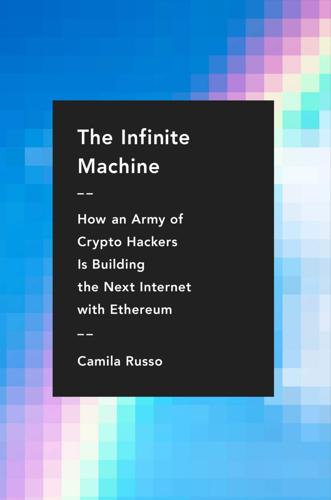
The Infinite Machine: How an Army of Crypto-Hackers Is Building the Next Internet With Ethereum
by
Camila Russo
Published 13 Jul 2020
From 2008, when Satoshi Nakamoto created the first decentralized digital currency, to 2011, Bitcoin ruled alone. But by December 2013, dozens of new coins, also known as alt-coins, had been created, and the speculation around them helped fuel the rally that year. When the early Ethereum team gathered in Miami, the first alt-coin bubble in cryptocurrencies’ short history had just reached its high point. As they schemed and dreamed of greatness, they were also planting the seeds for what would become a much bigger alt-coin boom. But that would be a few years later. That week the only thing people in the house cared about was that they were witnessing the birth of the next Bitcoin as in, the next big thing in cryptocurrencies.
…
Howard Marks, billionaire investor and Oaktree Capital cofounder, wrote in a letter to investors that “digital currencies are nothing but an unfounded fad (or perhaps even a pyramid scheme).” For one headline writer at The Economist the question wasn’t whether crypto was in a bubble, the question was, “What If the Bitcoin Bubble Bursts?” Other analysts were more bullish. Cryptocurrencies were surging because they were erupting into the mainstream, and their still-low penetration in investment portfolios or merchant acceptance was actually a good thing because it pointed to a higher upside. Fundstrat was the first Wall Street stock research firm to publish a Bitcoin price target, and its analyst, Tom Lee, quickly became one of the biggest Bitcoin bulls when he predicted BTC could soar to as high as $55,000 by 2022.

The Price of Time: The Real Story of Interest
by
Edward Chancellor
Published 15 Aug 2022
There were bubbles in industrial commodities and rare-earth elements, in US agricultural land and Chinese garlic bulbs, in fine or not-so-fine art (depending on your taste), bubbles in vintage cars and fancy handbags, bubbles in ‘super-city’ apartments, bubbles in sovereign bonds, bubbles in Silicon Valley unicorns and cryptocurrencies, and a giant bubble in American stocks. Never before in history had so many asset price bubbles inflated simultaneously. But then, never before in history had interest rates around the world sunk so low. The first bubbles of this new era formed in commodities. By late 2010, most industrial raw materials (palladium, iron ore, rubber, lead, copper and nickel) and several agricultural commodities (corn, coffee, soya beans, flaxseed, jute and wool) were trading at two standard deviations or more above their average levels.
…
Never mind that ultra-low rates, by keeping zombie companies on life-support, resulted in the survival of the least fit. Never mind that central bank policies contributed to rising inequality, undermined financial stability, encouraged ‘hot money’ capital flows and fostered numerous asset price bubbles, from luxury apartments to cryptocurrencies. As Draghi expressed it: ‘This is not a question of trade-offs. We cannot shy away from implementing a policy that ensures price stability on account of potential collateral effects.’53 The ECB would pursue its target, let the consequences be damned. 8 Secular Stagnation Is the devil of excessive thriftiness a mere bogey, after all?
…
Over the course of 1719 the share price of John Law’s Mississippi Company climbed nearly twentyfold. The rise in Bitcoin’s market price was even greater. Mississippi shares exhibited extreme volatility. Bitcoin’s price oscillations were even more extreme. By 2017, the leading cryptocurrency had survived several setbacks, the necessary condition for a ‘super-bubble’ to form. Whereas the Mississippi bubble attracted at most half a million foreigners to Paris, Bitcoin’s followers were numbered in millions. Whereas the Mississippi bubble created printed paper millionaires, Bitcoin conjured up digital billionaires, including the Winklevoss twins of Facebook fame.

MegaThreats: Ten Dangerous Trends That Imperil Our Future, and How to Survive Them
by
Nouriel Roubini
Published 17 Oct 2022
When GameStop and other shares returned to earth, small investors suffered massively. Indeed, many meme stocks—shares of a company that gained a cult-like following through social media—lost over 70 percent of their value in 2022 from their 2021 bubble valuations. A similar boom-and-bust cycle occurred in 2021-22 for cryptocurrencies, another asset class with no intrinsic value and whose bubble was driven by the FOMO (Fear of Missing Out) frenzy of retail speculators. Many experts brushed off these episodes as a fleeting departure from rational judgment. But can we overlook the fact that the US government had just sent checks to millions of adult Americans?
…
The rout engulfed the robust FAANG group that comprises Facebook, Amazon, Apple, Netflix and Google. Even venerable blue chip stocks wilted. Bad news proliferated. Meme stocks fell by over two-thirds from nonsensical 2021 peaks. The crypto market swooned. Bitcoin plummeted 70 percent from an all-time high months earlier. Flimsier cryptocurrencies fell even further by 80 percent or more. Bubbly SPACs sputtered and deals fizzled. US government bond yields tripled to 3 percent. Credit spreads above and below investment grade widened sharply, unsettling the global bond market where more than $100 trillion resides. In early 2022, the Fed and other central banks finally signaled that rising inflation required much tighter monetary policy.
…
They have signaled renewed inclination to finance huge deficits by printing money instead of issuing debt. Besides quantitative easing and zero interest rates, policy makers seem to want to make debt monetization a permanent feature of central banking. Where will that approach lead? To bubbles everywhere ready to burst: stocks, cryptocurrencies, hedge funds going crazy on risk, uninformed investors taking on short sellers over GameStop, millions of Gen Z and Gen X day traders spending their meager savings and fiscal transfers to bet on stocks, private equity groups and corporations borrowing like never before and, to top it off, housing prices going through the roof.
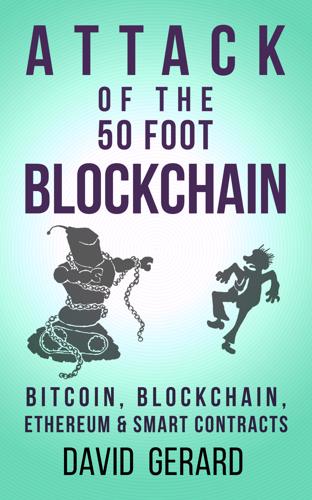
Attack of the 50 Foot Blockchain: Bitcoin, Blockchain, Ethereum & Smart Contracts
by
David Gerard
Published 23 Jul 2017
It turned out in practice to be a magnet for enthusiastic amateurs with stars in their eyes and con artists to prey upon them, with outcomes both hilarious and horrifying. Bitcoin and blockchains are not a technology story, but a psychology story: bubble economy thinking and the art of the steal. Despite the creators’ good intentions, the cryptocurrency field is replete with scams and scammers. The technology is used as an excuse to make outlandish near-magical claims. When phrases like “a whole new form of money” or “the old rules don’t apply any more” start going around, people get gullible and the ethically-challenged get creative.
…
Proponents of Austrian economics include the fringe economics blog Zero Hedge, which has confidently predicted two hundred of the last two recessions. Zero Hedge covers Bitcoin extensively, and Bitcoiners are fans in turn. Chapter 3: The incredible promises of Bitcoin! Nobody buys a toothbrush on the basis that the toothbrush market will go to the moon! (There hasn’t so far been a toothbrush asset bubble.) This is, however, the standard selling point for cryptocurrencies. As is claiming the selling point is anything other than hope that it will go to the moon. Advocates claim all manner of practical use cases for Bitcoin. A lot of the claims contradict each other, and indeed the actual software; others merely run aground on reality.
…
I’d have thought Ethereum would keep stumbling along, with no real application being found for smart contracts. I’d have forecast “Blockchain” slowly falling out of favour as a business buzzword as the returns failed to manifest. I would not have predicted a second bubble in Bitcoin, with tabloid newspaper finance sections enthusing about the fabulous potential of cryptocurrencies to normal people who have no business going within a mile of such horrifyingly risky investments. I would not have anticipated a matching bubble in Ethereum, and especially not in utterly substanceless ICO tokens, with no basis in anything whatsoever, being traded like hotcakes because they’re the exciting new item and for no other reason.

Boom: Bubbles and the End of Stagnation
by
Byrne Hobart
and
Tobias Huber
Published 29 Oct 2024
According to René Girard’s theory of mimetic desire, recently popularized among the Silicon Valley set by Peter Thiel, our wants tend to be borrowed from other people. We want not what we desire on our own but what we think other people desire. 152 This leads to a cycle of copying and competition, which, according to Girard, results in violence. Bubbles have their own mimetic elements—witness the evolution of the cryptocurrencies Dogecoin, Shiba Inu Coin, and the even more self-referential Floki Inu, named for Dogecoin fan Elon Musk’s dog. But bubbles are also an escape from a broader mimetic trap: Instead of violently discharging mimetic tensions, bubbles channel the destructive mimetic dynamic into something productive and socially net positive.
…
Like the Manhattan Project, the Apollo program succeeded in large part because of the visionary determination of what Peter Thiel has called “extreme founder figures”—people like von Braun, NASA’s George Mueller, and President Johnson—all of whom demonstrated a relentless drive that bordered on the kind of craziness observed during stock market manias. The Apollo bubble In retrospect, the ambition and scale of Apollo seems almost delusional. How could anyone believe that we’d land on the Moon and immediately start colonizing the solar system? It was akin to believing that tulips, real estate, and cryptocurrencies could only go up in value. But Apollo was also a bubble in another sense. Its growth followed bubble-like dynamics, leading researchers to describe it as a social bubble—a bubble that unfolded outside financial markets, inflated not by speculators but by technocrats and politicians. During a financial bubble, the composition of the market affects how prices are set.
…
Bitcoin’s extraordinary returns, and the ensuing media coverage and virality on social media, elicits FOMO as investors infer value from the profits others have accrued in the recent past. This leads to new waves of buyers, who accelerate price growth even more dramatically. The increase in speculation and adoption further stimulates the founding and financing of new Bitcoin-based or other cryptocurrency-related startups that attract more speculative adopters and incentivize more Bitcoin-related research and development. Every bubble has its excesses—the Lamborghini-laden parties of the 2018 run-up, 2021’s $69 million auction for non-fungible tokens—but each leaves behind infrastructure the next round of companies can build upon. These nested feedback loops create a closed system of socio-techno-economic incentives.
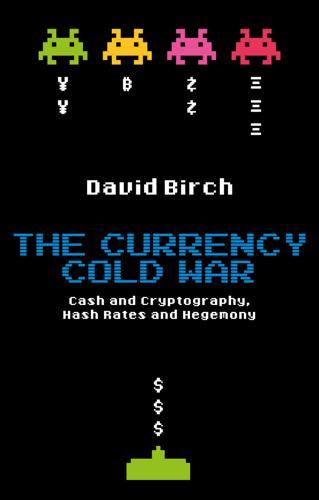
The Currency Cold War: Cash and Cryptography, Hash Rates and Hegemony
by
David G. W. Birch
Published 14 Apr 2020
Cryptocurrencies as a whole have, in fact, been falling as I have been writing this book, while Bitcoin – the original cryptocurrency – has been bouncing up and down. The economist John Kay is unconvinced that what appears to be a speculative bubble will lead to anything (Kay 2018). He writes that ‘the underlying narrative of cryptocurrencies is, by the standards of historic bubbles, unusually weak; more akin to tulips than to ultimately transformational innovations such as railways or electricity’. He goes on to observe that the ‘power of the current narrative is that it brings together so many features which make for an attractive and infectious story’, which I think is in keeping with some observers’ view of Bitcoin as a protest movement rather than a financial revolution.
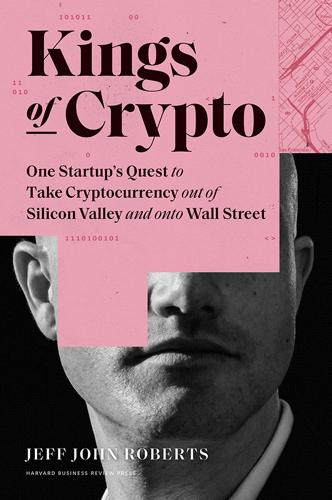
Kings of Crypto: One Startup's Quest to Take Cryptocurrency Out of Silicon Valley and Onto Wall Street
by
Jeff John Roberts
Published 15 Dec 2020
And while the big-blockers and small-blockers of bitcoin traded death threats and invective during 2015, a sunny and unified community of Ethereum backers would share the new currency with the public. Ethereum also enjoyed a special advantage over bitcoin. It had an acknowledged leader in the form of its wunderkind creator who would become the most famous figure in cryptocurrency after Satoshi. PART TWO * * * From Boom to Bubble to Bust 7 Enter Ethereum Vitalik Buterin is soft-spoken, pale, and practically skeletal. He likes to wear “My Little Pony”–style T-shirts. A child of Russian émigrés, he grew up in the Toronto suburbs and, even as a tiny boy, knew he was different from other children.
…
Gox, 57 Casares, Wences, 182–183, 216 Casey, Michael, 23 celebrity endorsements, 144–145 Chainalysis, 196 Charles Schwab, 207–208 China, 81–83, 207 Choi, Emilie, 175, 191, 209 Circle, 55, 105 circuit breakers, 140 Clayton, Jay, 169 CNBC, 146 Coinbase, 173 acquisitions by, 186–187, 197, 209 agency trading model at, 174 Apple Store and, 40, 63 Balaji at, 185–187 Binance and, 179–181, 187–190 Bluxome Street office, 37–38, 66–67 capacity issues at, 151 Chicago and, 192 cold storage at, 43–44 competition for, 54–55, 178–181 the crypto winter and, 172–175 culture at, 39, 49–51, 67–68, 189–190 currencies added to, 96–97, 181–182, 187–190, 196 customer acquisition at, 47, 139, 154, 156–157 customer service at, 159, 173–175 diversification at, 64, 209 engineering strategy at, 187–188 Ethereum and, 93–95 Facebook and, 205–206 first hires at, 24–30 flash crash and, 139–141 funding rounds for, 33–37, 51, 64–65, 154–155, 173 future of, 216, 219–220, 225–226 hacking attacks on, 40–43, 143, 157 hiring at, 29, 37–41, 45–47, 49–51 Hirji at, 157–158 hot wallet attack on, 40–43 infrastructure issues at, 155–159, 209–210 IRS and, 121–126 JP Morgan and, 213 layoffs at, 74 leadership team at, 157, 175 Market Street office, 67 Moon Launch, 65 opposition to, 27 origins of, 3–15 in other countries, 65 private keys and, 9 profits at, 154–155 regulation and, 118, 121–131 reputation of, 42–43, 68, 71–72, 124, 125 running through brick walls at, 33–52, 63–64 security systems at, 79–80 Silicon Valley Bank and, 69–70, 72–73 staff departures from, 117–118, 193–195 super voting shares at, 112–113 threats against, 149–151 Wall Street and, 104 coinbase, in bitcoin, 21 CoinDesk, 145, 182 Commodity Futures Trading Commission (CFTC), 126 Conscious Leadership, 68 Consensus, 167 ConsenSys, 94 Covid-19 pandemic, 221–223 The Creamery, 37–38 creative destruction, 214 criminal activity, 18, 224 Dread Pirate Roberts and, 31, 59 money laundering, 45, 58 Mt. Gox and, 56–58 Ponzi schemes, 141–142 swindles, 141–145 threats of, 149–151 cryptocurrencies academic research on, 218–219 altcoins/shitcoins, 138 Binance and, 179–181 bubble around, 133–139 bubble in, 138–145, 149–155 bull run in, 201–203 celebrity endorsements of, 144–145 code for, 188–189 crash in, 160–161, 165–175 exchanges of, 127, 215–216 Libra, 205–207 as property versus currency, 122–126 swindles using, 141–145 See also individual currencies crypto winter, 170–175, 198, 201 Custody, 209 cypherpunks, 23, 99–100 CZ.
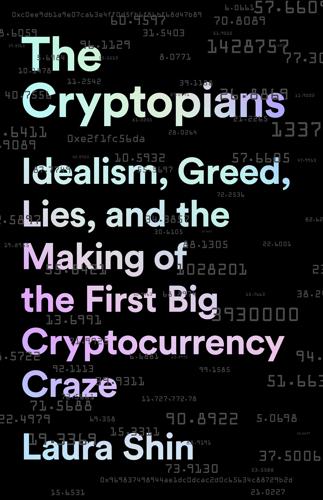
The Cryptopians: Idealism, Greed, Lies, and the Making of the First Big Cryptocurrency Craze
by
Laura Shin
Published 22 Feb 2022
It has a healthy satellite industry that provides products and services based around it, and it has its own business and advocacy organizations, but there is no central Gold Corporation.”13 When the first printed edition arrived, he saw it featured twelve articles on topics such as the personality of anonymous Bitcoin creator Satoshi Nakamoto, the history of previous attempts at cryptocurrency, and the Bitcoin bubble of 2011. (The price had barely budged from Christmastime and was now about $5.) Scanning the magazine’s sixty-nine pages, Vitalik realized that nine of the twelve articles were by him. Concluding they must have had a hard time finding other writers, he was grateful for the opportunity.
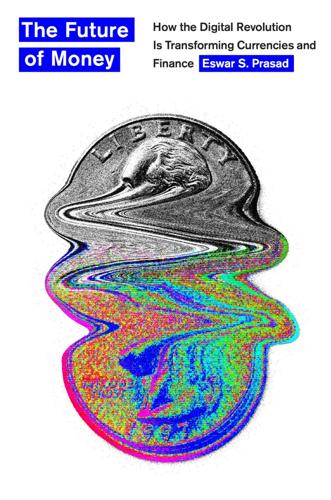
The Future of Money: How the Digital Revolution Is Transforming Currencies and Finance
by
Eswar S. Prasad
Published 27 Sep 2021
The advent of Bitcoin and the Proof of Work protocol it is built upon together constitute an environmental calamity. Why Isn’t the Price of Bitcoin Zero? At a conference held in Scotland in March 2018, then Bank of England governor Mark Carney observed that “the prices of many cryptocurrencies have exhibited the classic hallmarks of bubbles including new paradigm justifications, broadening retail enthusiasm and extrapolative price expectations reliant in part on finding the greater fool.” The last phrase in his statement was an allusion to the period of seemingly ever-rising real estate prices during the US housing boom of the early to mid-2000s.
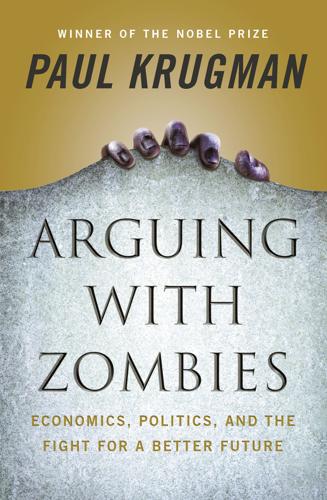
Arguing With Zombies: Economics, Politics, and the Fight for a Better Future
by
Paul Krugman
Published 28 Jan 2020
Clearly, cryptocurrencies are in effect competing for some of the same business: very few people are using Bitcoin to pay their bills, but some people are using it to buy drugs, subvert elections, and so on. And the examples of both gold and large-denomination banknotes suggest that this kind of demand could support a lot of asset value. So does this mean that crypto, even if it isn’t the transformative technology its backers claim, may not be a bubble? Well, this is where tethering—or, more precisely, its absence for cryptocurrencies—comes in. In normal life, people don’t worry about where the value of green pieces of paper bearing portraits of dead presidents comes from: we accept dollar notes because other people will accept dollar notes. Yet the value of a dollar doesn’t come entirely from self-fulfilling expectations: ultimately, it’s backstopped by the fact that the U.S. government will accept dollars as payment of tax liabilities—liabilities it’s able to enforce because it’s a government.
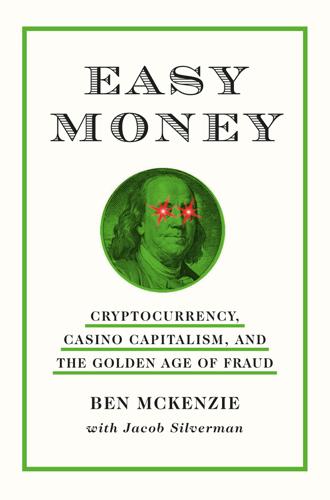
Easy Money: Cryptocurrency, Casino Capitalism, and the Golden Age of Fraud
by
Ben McKenzie
and
Jacob Silverman
Published 17 Jul 2023
From Texas to Florida, El Salvador to Washington, D.C., and even into the wilds of Manhattan, we will give you an inside look at one of the greatest frauds in history, bigger than Madoff by an order of magnitude. As a longtime TV actor with a decades-old degree in economics, I might seem like an unlikely casting choice as the author of a book about crypto-currency. But however strange, my background actually positions me well to pierce the hallucinatory bubble powered by fantasy money. At its core, this is a tale of money and lying. What I know of money I learned in a classroom more than twenty years ago (and from making a little bit of it in Hollywood). What I know of lying I learned from two decades spent in show business.

The Optimist: Sam Altman, OpenAI, and the Race to Invent the Future
by
Keach Hagey
Published 19 May 2025
Louis Post-Dispatch (newspaper), 40–41 Stanford Daily, The (newspaper), 56, 63 Stanford Review, 56, 131 Stanford University AI lab at, 90 annual competition held by, 182 BASES (Business Association of Stanford Entrepreneurial Students), 60 courses at, 55, 131 Education Program for Gifted Youth, 173 electric vehicle project, 57 endowment of, 155 FroSoCo (short for Freshman Sophomore College), 55, 57 Full Moon on the Quad, 92–93 generous student leave policy, 91 program in India, 64 StartX startup accelerator, 90 Summer Research College program, 57 YC Startup School online course at, 122–23, 194, 234 startups bankruptcies, 31, 87–88, 145, 205 discrimination in, 70 the first venture-funded startup, 72 founders as kings, 6, 60, 65, 68, 70–75, 87, 95 normalization of starting a startup, 70, 150 “RIP Good Times” deck, 117, 123 Startup School online course, 122–23, 194, 234 unicorns, 150, 311 see also investing; Sequoia Capital; Y Combinator (YC) StartX, Stanford’s startup accelerator, 90 Stiegler, Marc, 140, 199–200 Stone, Zak, 76, 77, 82 “Strawberry” (o1), 284, 309 Streit, Steve, 126–28, 134 Stripe, 4, 16, 123, 125, 136, 139, 150, 152, 157–58, 172, 175–76, 189–90, 246, 251 Stross, Randall, 133 StumbleUpon, 174 Suleyman, Mustafa, 146–47, 277 Summer Founders Program and Angel Day, 62, 64, 68–70, 75–82 Summers, Larry, 294, 303 Sun Microsystems, 230 Sun Valley Resort, 228–29, 263 Sunak, Rishi, 274 Superalignment team, 284, 305–6 superhuman machine intelligence (SMI), 170 superintelligence, machine, 143, 145, 164, 167, 170, 309, 315, see also AI (artificial intelligence) Superintelligence: Paths, Dangers, Strategies (Bostrom), 5, 163–66, 167–68 Supreme Court, 26, 52 Sutskever, Ilya, 169, 178–88, 189–96, 209, 211, 217–23, 244–45, 266, 287, 282–94, 304–5, 308–10, 312–13 Swartz, Aaron, 63, 76, 81, 160n SXSW (South by Southwest), 118–19 Szabo, Nick, 142 Tallinn, Jaan, 5, 144, 168, 300–301 Talve, Susan, 43–44 Tamarine Asian fusion restaurant, Palo Alto, 92 Tan, Garry, 236 Tana, Evan, 96, 102, 121 Tang, Nini, 95–96 taxes, 22, 34–35, 53, 206, 256 Tay the chatbot, 270 Taylor, Bret, 293 Teach Yourself Visual Basic in 24 Hours, 56 “teach-ins,” 94 tech bros cosmic conversations of, 147, 260, 314–15 hackers/hacking, 3, 57, 63, 68–70, 160n, 162 love of Burning Man, 1, 198–99 love of cars, 26, 51 as mostly college drop-outs, 62, 88, 91–92, 96, 108, 113, 124, 132, 175, 179, 217–18 racism among, 164–65 sci-fi, 3, 43, 47, 140, 199–200, 214, 220, 307–8 space colonization, 144, 147, 170–71 techno-utopianism among, 205, 256–57 WhatsApp group of tech CEOs, 289 wrestling among the, 109 see also cryptocurrency tech industry Big Tech companies, 182, 185, 197, 299, 308 dot-com bubble of the late 1990s, 73, 87, 93 lobbying by the, 109, 144, 179, 274, 292, 300–301 the massive valuations of tech companies, 71, 73, 138–40, 152, 290 nanotechnology, 144, 164 semiconductor industry, 72–73, 132, 298 think tanks in the, 142, 144, 267, 299–300 “women in tech,” 42, 70, 203, 252, 271 see also innovation; software development; startups TechCrunch (news site), 161, 259 technological progress, see innovation techno-utopianism, 205, 256–57 Teespring T-shirt-making startup, 156 Tegmark, Max, 145, 168–69, 208 telepresence, 210 Teller, Sam, 171 Temple Israel, 24, 25 Terminator film franchise, 200 Tesla, 153, 167, 194, 223–26, 234, 255 Test of Time Award, 305 TextPayMe, 82 The Game (rapper), 102 “TheFacebook,” 60, see Facebook Theranos, 108 Thiel, Peter, 1–7, 10, 16–17, 125, 134–48 contributions to Trump presidential campaigns, 203–4 data-mining company, 217 Facebook and, 131, 204 Founders Fund venture firm, 2, 6, 132, 139, 147, 226 founding of the conservative Stanford Review, 56, 131 From Zero to One (with Masters), 132, 230 Halcyon Molecular, 257–59 Helion Energy nuclear fusion startup, 13, 136, 207, 259, 280, 298 his “Founders Fund” venture firm, 2, 6, 132, 139, 147, 226 Inflection AI, 277 PayPal, 93, 125, 131, 136, 140, 147, 161, 171 personal beef with Gawker Media, 137, 204–5 the pessimistic contrarianism of, 4, 131–33, 137–38, 204 Saudi Arabia and, 231–32 Thiel Fellowships, 132, 178 think tanks, 142, 144, 267, 299–300 Thole, Craig, 103 Thorpe, Meridith, 46 thought leadership, 89 Three Mile Island nuclear plant, Harrisburg, PA, 135 Thrive Capital, 161, 290, 310 Thrun, Sebastian, 144 Time magazine, 1, 112 Time Warner, 229 Tivo, 121 Tokyo, 79 Toner, Helen, 241–42, 266–67, 276–79, 282–88, 291, 292, 299, 309 Tools for Humanity, 256 Torres, Émile, 164 Track Trump website, 204 trademark issues, 101 transcendentalism, 46 “transformer paper, the,” 218–19, 270, see also AI research/training transhumanism, 143–45, 165, 166, 170 Trapp, Shel, 22, 35 Traynor, Bill, 35 Tripadvisor, 80 Trump, Donald, 40, 201, 203–4, 208, 296, 313 Tsai, Tommy, 96, 113, 114 Tulyasathien, Charnsin, 110 Tuna, Cari, 212 Turing, Alan, 173–74, 295 Turing Award, 142 Twitch, 82, 157, 292–93 Twitter, 118, 158, 169, 246–47, 261, 270, 281 Uber, 231 “Unified Theory of VC Suckage, A,” 72–73 United Arab Emirates (UAE), 281, 298, 310, 313 United Nations Moon Agreement of 1979, 144 United Slate, The (online platform), 206–7 United States during the AIDS crisis, 33, 43, 49 Biden administration’s AI policies, 232, 267, 277, 299–300 Defense Advanced Research Projects Agency (DARPA), 140, 196 Democratic Party, 21, 204, 207–8, 234, 296 Department of Commerce, 273, 277, 299, 301 Department of Defense, 299 Department of Energy, 196 Department of Homeland Security, 299 Department of Housing and Urban Development (HUD) redevelopment projects, 35 Federal Communications Commission (FCC), 59, 106 Federal Trade Commission, 285 the frontier in American history, 153 Government Accountability Office, 300 during the Great Depression, 24 Intelligence Advanced Research Projects Activity (IARPA), 267 investment blacklists from the, 231 loss of technological mojo since the 1960s, 135 Medicare for All, 206 NASA, 132–33 National Security Council, 299, 301 post–World War II industrial boom, 72 Supreme Court, 26, 52 taxes, 22, 34–35, 53, 206, 256 US Army, 24, 27n, 32 see also US Congress universal basic income (UBI), 12–14, 194, 205, 256 Universe project, a general AI agent, 191–93 University College London’s Gatsby Computational Neuroscience Unit, 145 University of California, Berkeley, 94, 111, 122–23, 167, 178, 194, 234, 277, 305 University of Virginia retracted gang rape allegations, 204 Upright Citizens Brigade, 228 US Congress, 301, 309 CHIPS and Science Act, 298 Computer Fraud and Abuse Act, 68 Congressional Internet Caucus, 106 House of Representatives, 34, 106 law on location tracking on mobile phones, 58–59 Senate, 2–3, 5, 273, 296–97, 300, 309–10 user experience, 79, 119, 195, 254 average revenue per user, 79 churn rates, 105 content moderation, 254 see also chatbots utilitarianism, 2, 143, 211 “utilons,” 212 Uygur population in China, 231 Valentine, Don, 87, 112–14 Valleywag (blog), 137, 205 “value-lock,” 252 Valve, 215 Venture Beat (news site), 117 venture capital (VCs), 6–7, 8, 12, 60–62, 66 “aligning our incentives,” 256 Andreessen Horowitz, 155, 158, 161, 257 deal flow, 88, 95, 124 history of, 72–73 Khosla Ventures, 230, 235, 257 Kleiner Perkins, 162, 230 Matrix Partners, 90 Mithril Capital, 136 Peter Thiel’s Founders Fund, 2, 6, 132, 139, 147, 226 on Sand Hill Road, Palo Alto, 79, 85, 93, 116–17, 158, 177 why they suck, 72–75, 77 see also investing; Sequoia Capital; startups; Y Combinator (YC) Verbling video chat language learning service, 138 Verge, The (news site), 272 Verizon, 62, 100, 104–5, 110, 119 Viaweb, 68, 70, 73–74 Vice News Tonight, 205–6 Victor, Bret, 197 video games AI Dungeon, 247–48, 254–55 Atari, 87, 147, 165, 190 Breakout, 147 Dota 2, 215–18, 221–22, 242, 284 Halo 3, 95, 109 Resident Evil, 97 The Sims, 97 Warcraft III: Reign of Chaos, 215 Viendo, 60, 61, 63–65, 74, 76 Viewpoints Research Institute, 198 Vinge, Vernor, 140, 145, 168 viruses, computer, 154, 200 viruses, Covid-19, 248–50 Visual Basic language, 56 Visual Studio development environment, 262 Vivarium Project, 209–10 VotePlz voter registration app, 203–4 “Voting with Your Feet: An Investigative Study of the Relationship Between Place Visit Behavior and Preference” (Potter and Howard), 111 Vox (news site), 306 Wall Street Journal, The, 7, 10–12, 17, 42, 57, 105, 124, 212, 229–32, 298 “walled garden,” 110 Walmart, 126, 133 Walton, Nick, 246–47, 254–55 Warcraft III: Reign of Chaos (video game), 215 Washington, Harold, 21–22, 33–34, 37 Washington Post, The (newspaper), 232, 301 “waterfall” method of software development, 126 Watters, Nathan, 50–51, 201 We Are the Nerds (Lagorio-Chafkin), 161 WebGPT, 265 WebMind stock market trend prediction software, 145 WebText, 241, 244 Weebly, 157 Weiden, David, 89–90, 103–4, 108, 230 Weigend, Andreas, 90 Weil, Elizabeth, 281 Welinder, Peter, 247–48 West, Kanye, 102 Westrup, Evan, 206 Westworld (TV show), 199 Wevorce online divorce service, 138 “Where is Ilya?”
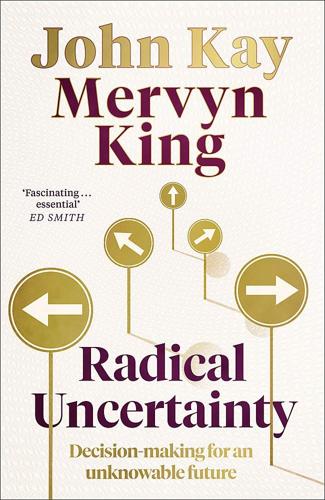
Radical Uncertainty: Decision-Making for an Unknowable Future
by
Mervyn King
and
John Kay
Published 5 Mar 2020
And in all these cases investors lost very large amounts of money as greater realism finally set in. The collapse of a narrative is a more rapid process than its transmission. And as we write, the financial press is full of perhaps the thinnest story since tulips to give rise to a bubble – the imagined future takeover of the world monetary system by crypto-currencies. Like other popular fictions, the Bitcoin phenomenon combines several perennial narratives – in this case, a libertarian vision of a world free of state intervention, the power of a magic technology, and the mystery of ‘money creation’. Round-up at Jackson Hole In the 1980s, bond markets, once staid backwaters of the financial system, became the focus of an exciting new narrative based on securitisation.
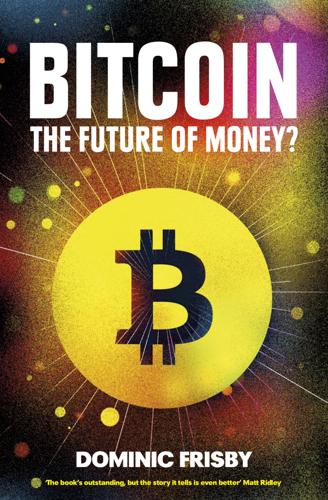
Bitcoin: The Future of Money?
by
Dominic Frisby
Published 1 Nov 2014
If Bitcoin holdings went to 5% of that, the price would be $17,000 per coin – a 3,400% gain. Current global money supply stands at $250 trillion. If Bitcoin made up just 1% of that, the price would be $119,000 per coin – a 24,000% gain from the current price of $500. Assuming widespread adoption of cryptocurrencies, the lesser-known altcoins, if they take off, will rise by a greater magnitude. When a bubble gets really big, it grows to the size of the US stock market. At the end of the 1970s bull market in gold, the value of global gold holdings exceeded the market cap of the entire US stock market. At the climax of the Japanese bull market of the 1980s, the Japanese stock market matched the US stock market for size.